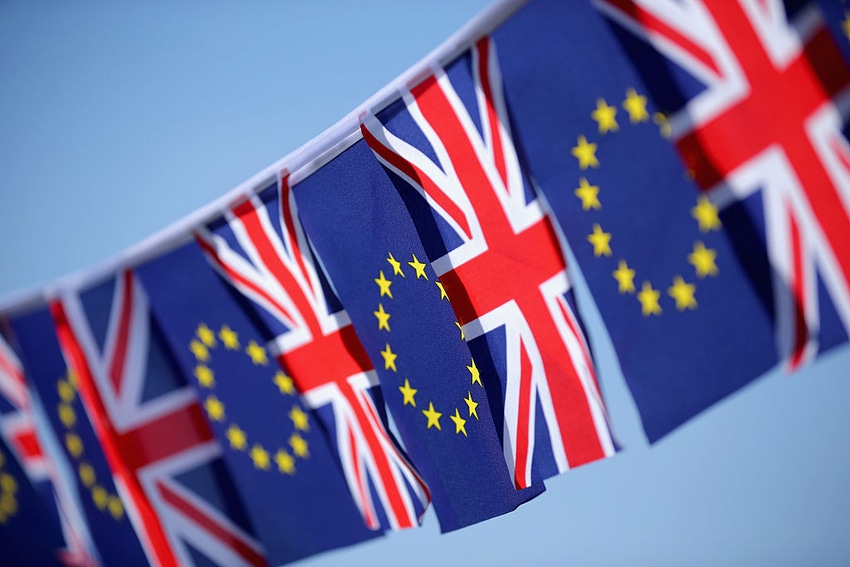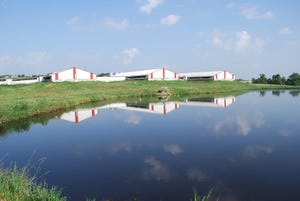What is Brexit’s potential impact on beef trade?
The Brexit vote for Great Britain to leave the EU sent shock waves through international markets.
July 7, 2016

International trade news has been dominated in recent days by coverage of the referendum in which United Kingdom (UK) voters elected to leave the European Union (EU). Most odds-makers expected the “remain” side to prevail in a very close vote. But in the end, voters chose to leave the EU by a margin of 52% to 48%. It is important to note that the UK’s departure from the EU will not happen overnight. The process requires extensive negotiations between the UK and the EU that are expected to take at least two years.
The most immediate economic impact of the so-called Brexit (Britain’s exit) vote was to send the British pound plunging to a 31-year low versus the U.S. dollar, with a global rush to safe-haven currencies like the dollar and the Japanese yen. The pound dropped about 10% initially, to $1.33, and was still trading around that level more than a week later. The euro, which had averaged close to $1.13 since April, dropped about 2% to $1.11, and continued to drift to $1.10. The Japanese yen surged to 99 yen against the U.S. dollar – a gain of 7% and the strongest since November 2013 – while other Asian currencies declined. The yen is now trading closer to 102 yen to the dollar.
“The euro had been strengthening versus the U.S. dollar through most of June, which was a positive trend for U.S. beef exporters serving the EU,” explained U.S. Meat Export Federation (USMEF) Economist Erin Borror. “That’s been interrupted for the time being, but the market fundamentals still argue for a strengthening of the euro once the shock of the Brexit vote recedes.”
Potential implications for market access
All U.S. beef shipped to the European Union is from non-hormone-treated cattle (NHTC), and most of it enters the EU under a duty-free quota. The quota compensated the U.S. for the fact that the EU decided to leave its hormone ban in place, even after the World Trade Organization ruled against the ban. Once the UK officially leaves the EU, the duty-free quota will no longer apply to U.S. beef entering that country.
“It’s unclear at this time how the UK will address duties on imported meat – not only from the United States, but from other trading partners as well,” Borror says. “The UK is a major net importer of meat products, with Ireland its largest beef supplier. It would not seem to be in the UK’s interests to begin imposing tariffs on beef that it currently imports duty-free, but that remains to be seen. In the meantime, U.S. exporters are still able to supply NHTC beef to the UK under the duty-free quota, but our product is now more expensive with the weaker pound.”
Another important question is how the UK’s departure will impact the EU’s trade negotiations – especially the Transatlantic Trade and Investment Partnership (TTIP) talks with the United States. The TTIP negotiations were already progressing slowly, and the Brexit vote isn’t likely to help.
“The Obama administration and the European Commission continue to hold out hope for completing the TTIP negotiations by the end of the president’s term, but the Brexit vote reduces the odds of reaching a deal in the second half of this year,” says Thad Lively, USMEF senior vice president for trade access. “It’s not impossible for TTIP to regain momentum under these circumstances, but it will certainly be difficult now that the EU must give even greater attention to economic and trade issues within the bloc.”
In addition to TTIP, the EU is in the process of ratifying an already-negotiated trade agreement with Canada and is in the final stages of negotiations on an economic partnership agreement with Japan. It also has launched negotiations on trade agreements with the Philippines, Australia and New Zealand, and recently revived its long-stalled negotiations with the South American trading bloc Mercosur.
Lively notes that while it has always been difficult to negotiate agricultural market access issues with the EU, the UK’s departure could make it an even more formidable task.
“Because the UK has been a relatively moderate voice within the EU on trade and regulatory issues, its departure could result in a hardening of the EU positon on its bilateral agricultural trading relationship with the United States,” he explained.
How does Brexit affect global beef trade?
While increased production and a weak euro have helped the EU emerge as a pork export powerhouse, its presence in global beef trade remains fairly limited. Last year, the EU accounted for about 5% (376,000 metric tons) of global beef export volume, making it the world’s seventh-largest exporter.
But there are much larger volumes of beef traded between EU member states, and the UK alone imported about 340,000 mt last year. The UK is Ireland’s biggest market, and Ireland accounts for more than 60% of UK imports, followed by Brazil with around 10%. Australia accounts for roughly 2% of UK imports, and the UK is Australia’s largest market within the EU.
The UK also exports significant volumes, roughly 154,000 mt last year, with 30% bound for Ireland, and much of the remainder to other EU member states. So besides Ireland and the other Member States, Brazil and Australia have the most at stake given the uncertain trading relationship in the future.
“For the U.S. beef industry, the EU is an important customer and not considered a major head-to-head competitor,” Borror said. “Yet the UK does export significant volumes outside the EU, especially variety meat, to Hong Kong, Vietnam, South Africa and the Philippines. In the near term, the weak pound could help UK exports. But in the longer term, any slowdown in UK imports from Ireland and Australia could lead to further competition from Irish and Australian product in the rest of the world.”
You might also like:
9 new pickups for the ranch in 2016
Use cow-pie-ology to monitor your herds nutritional status
70 photos of hardworking beef producers
5 must-do steps for fly control on cattle
Here's when you should castrate beef valves
Photo Tour: World's largest vertically integrated cattle operation
You May Also Like



